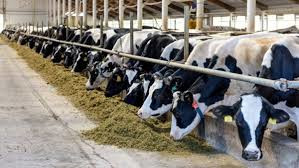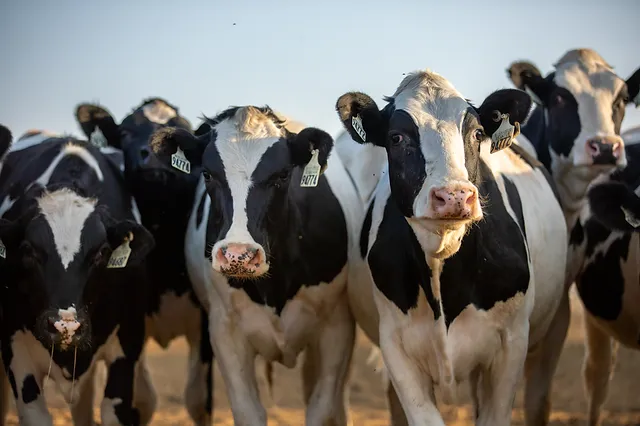The productivity and reproductive performance of dairy cattle are influenced by a combination of genetic and non-genetic factors. In genetic factors, genetic selection plays a significant role in improving both productivity and reproductive traits in dairy cattle. Breeding programs aim to select animals with desirable traits such as high milk yield, good fertility, and longevity. Variations in genes contribute to differences in milk production, fertility, and other traits among individual animals and breeds.
However, certain genetic disorders or abnormalities can negatively impact both productivity and reproductive performance in dairy cattle. These may include conditions like dystocia (difficulty calving), hereditary diseases, or genetic defects affecting fertility.
In non-genetic factors, adequate nutrition is crucial for maximizing milk production and maintaining reproductive health in dairy cattle. Imbalances or deficiencies in dietary nutrients can lead to reduced milk yield, poor fertility, and reproductive disorders. Factors such as housing, hygiene, healthcare, and overall management practices can influence the productivity and reproductive efficiency of dairy cattle. Proper housing conditions, regular health check-ups, and effective reproductive management protocols can help optimize performance.
Environmental factors such as climate, temperature, humidity, and stress levels can impact both milk production and reproductive function in dairy cattle. Heat stress, for example, can reduce fertility and milk yield. Infectious diseases, parasitic infestations, and metabolic disorders can affect the health and productivity of dairy cattle. Timely disease prevention measures, vaccination, and veterinary care are essential for maintaining optimal performance. Efficient reproductive management practices, including estrus synchronization, artificial insemination (AI), and proper timing of breeding, are critical for maximizing reproductive efficiency and achieving desired pregnancy rates.
In Tanzania, milk production demands the use of crossbreeding systems that include breeds adapted to harsh conditions with moderate productivity compared to pure exotic dairy breeds. In the present study, the data from 1013 cross-bred cows raised at TALIRI – Tanga, Tanzania grouped in three genotypes, pure Boran (BB), Boran x Friesian (BF), and Boran x Jersey (BJ) were used to determine the effect of genotype, season of calving and parity on age at first calving (AFC), calving interval (CI), 305 days milk yield (MY) and lactation length (LL). The General Linear Models (GLM) procedure of SAS software 2020 was used to estimate the least square means of the traits while the MANOVA procedure in SAS 2020 was used to establish partial correlation coefficients between traits.
The VARCOMP of RStudio-2023 was used to estimate variance components to calculate the heritability of the traits. The results revealed that at (P<0.05), BJ heifers had significantly shorter AFC, BF had higher MY, and BB with longer CI compared to other genotypes. The dry season calving resulted in significantly shorter LL while the fourth parity had higher MY compared to the early lactations. Cows in the fourth parity had significantly shorter CI for about 41 fewer days than those in the first parity. Heritability estimated for AFC, LL, and CI were 0.19,0.28,0.32 respectively. While phenotypic correlations (Rp) between AFC and MY were negative and weak and that between LL versus MY was moderately positive. From these findings, it is concluded that crossing of Boran cattle with Jersey or Friesian cattle can significantly improve AFC and milk yield. However, the low to moderate heritability, for reproductive and productive traits under this study, improvement of crossbred cows in hot and humid areas like Tanga should be accompanied by the improvement of the animal husbandry practices to achieve the desired output.

The interaction between genetic and non-genetic factors determines the productive and reproductive performance of dairy cattle. Effective management strategies that address both genetic potential and environmental influences are essential for optimizing profitability and sustainability in dairy farming.
For more information CLICK HERE
Chamwazi F.M., Nguluma A., Nziku Z.C. and Mbaga S.H. (2024). Effect of Genetic and Non-Genetic Factors on Productive and Reproductive Performances of Dairy Cattle at TALIRI–Tanga. Asian Journal of Research in Animal and Veterinary Sciences. Volume 7, Issue 1, Page 17-28, 2024; Article no.AJRAVS.112534
The Department of Animal, Aquaculture, and Range Sciences
The College of Agriculture, Sokoine University of Agriculture
Share this page

